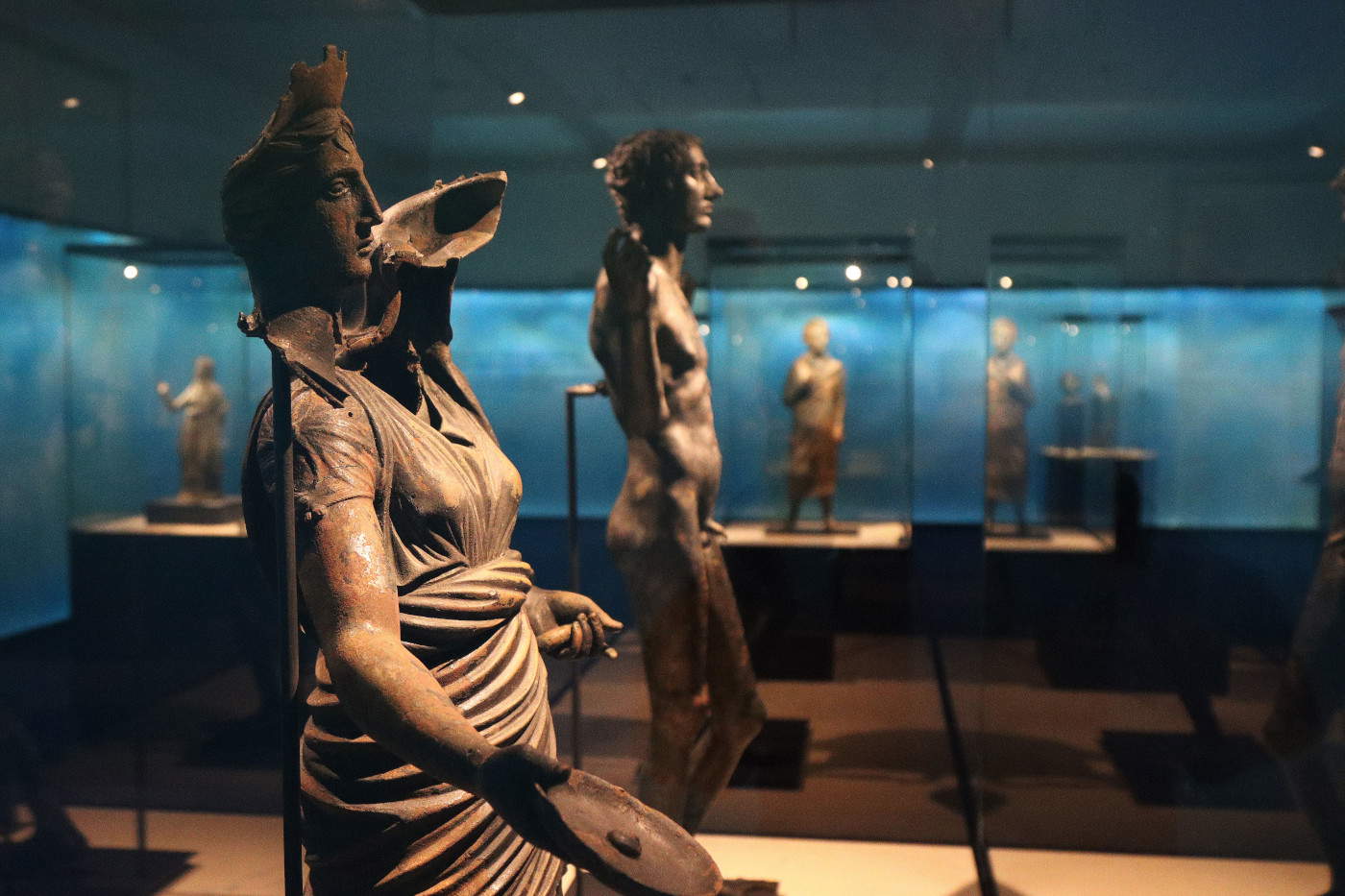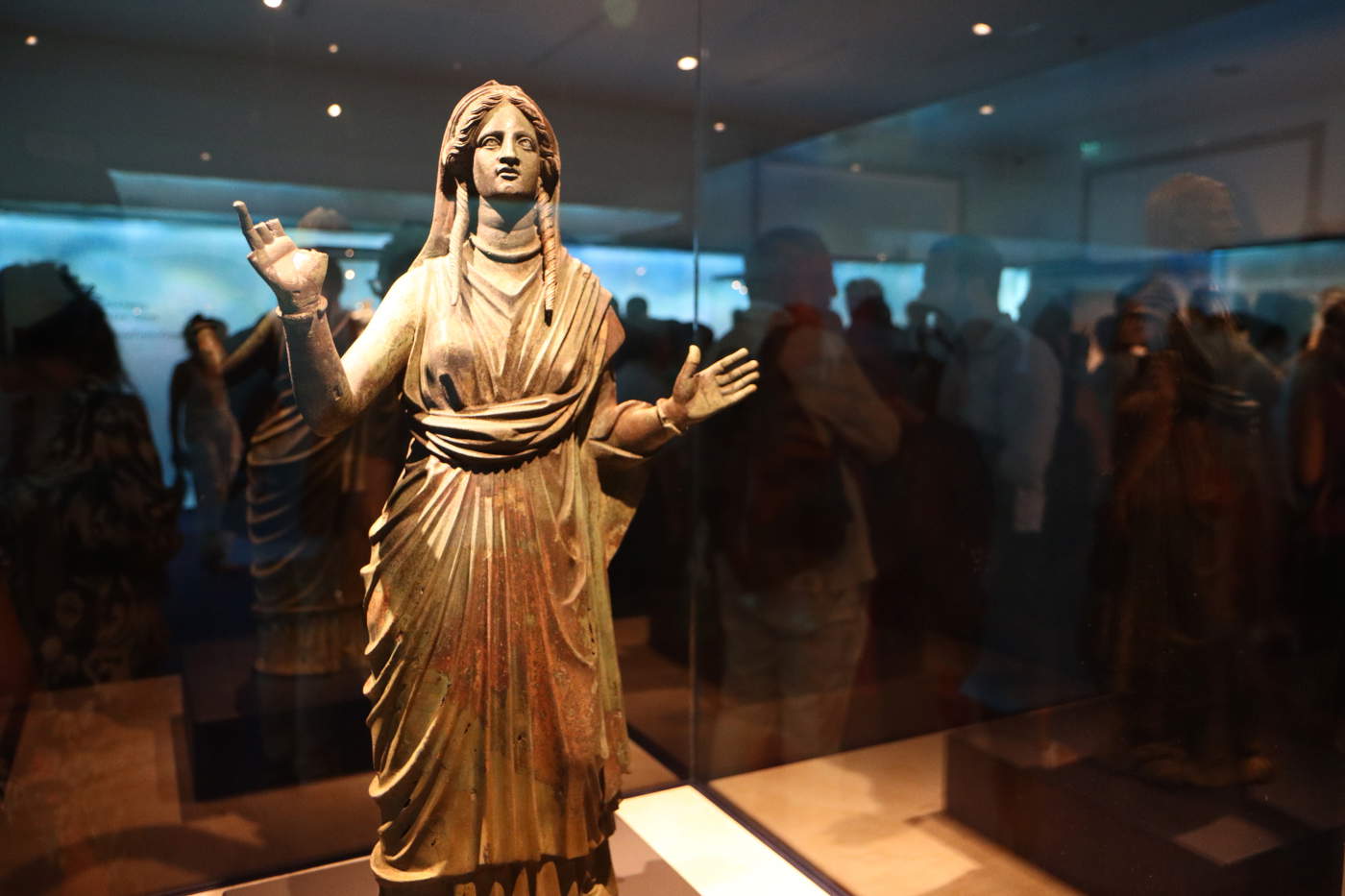San Casciano bronzes on display at the National Archaeological Museum of Reggio Calabria
The bronzes found in San Casciano dei Bagni are on display at the National Archaeological Museum in Reggio Calabria on the occasion of an exhibition dedicated to them entitled Gli dèi ritornano - I bronzi di San Casciano, curated by Massimo Osanna and Jacopo Tabolli. After being displayed at the Palazzo del Quirinale and the National Archaeological Museum in Naples, the bronzes found in the summer of 2022 in the Etruscan and Roman bath sanctuary of Bagno Grande in San Casciano dei Bagni can be admired until January 12, 2025 in Reggio Calabria. The exhibition was promoted by the Ministry of Culture and implemented by the Ministry of Culture’s Directorate General for Museums together with the National Archaeological Museum of Reggio Calabria, thanks to the collaboration between various institutions dedicated to the research, protection and enhancement of cultural heritage. The archaeological excavations were granted to the Municipality of San Casciano dei Bagni by the General Directorate of Archaeology, Fine Arts and Landscape of the MiC, with the tutelage of the Superintendence of Archaeology, Fine Arts and Landscape for the Provinces of Siena, Grosseto and Arezzo and the scientific coordination of the University for Foreigners of Siena. Restorations were carried out with the support of the Central Institute for Restoration. The layout was designed by Guglielmo Malizia and Chiara Bonanni of the architectural firm Decima Casa.
Among the exhibits are reproductions of anatomical parts, votive offerings to ask for health from the deities or to give thanks for a healing, and statues made according to the canons of the so-called mensura honorata (three Roman feet high, about one meter), depicting the deities worshipped in the sacred place or the devout. Most of these precious artifacts date from the second and first centuries B.C., a time of great change characterized by the final Romanization of the powerful Etruscan cities. The one in San Casciano dei Bagni turned out to be the largest repository of bronze statues from the Etruscan and Roman periods ever discovered in ancient Italy and one of the most significant in the entire Mediterranean.
“The exhibition dedicated to the Bronzes of San Casciano, now housed in the National Archaeological Museum of Reggio Calabria, offers visitors the opportunity to admire artifacts and works of great interest, but also to appreciate the results of an archaeological research still in progress,” said Massimo Osanna. “In fact, the bronze statues have been found and excavated in their original context, and this makes it possible to study and reconstruct the stories of the people who frequented the ancient sanctuary, which from the third century B.C. to the fifth century A.D. made thermal water its focus. The tale of this center of ritual and worship, which was Etruscan first and Roman later, thus unfolds through the exhibition as a journey through the landscape of sacred waters, but it is at the same time a journey through the stages of the most authentic archaeological research. Thanks to the collaboration between the Italian Museums, the Superintendence, the University and local authorities, a process of enhancing the results of studies has been put in place, which should be the ultimate goal of all museum projects.”
“The occasion of the exhibition also ties in with the continuation of the excavation at Bagno Grande,” said Jacopo Tabolli. “Over the past few weeks more than sixty students from universities around the world have been working in the Etruscan and Roman sanctuary shedding new light on the oldest phase while bringing to light new and exceptional data on the rituals and cults that took place around and inside the hot spring. The importance of ancient medicine prayed and practiced at the place of worship emerges ever more clearly. An extraordinary training opportunity for young archaeologists who see in this exhibition the fulfillment of their labors.”
“I am honored to host the exhibition of the Bronzes of St. Casciano at the National Archaeological Museum of Reggio Calabria,” commented museum director Fabrizio Sudano. “From the very first days of my tenure as director at the MArRC, in January 2024, I strongly wanted the two most important archaeological discoveries of the last two centuries, that of the St. Casciano Bronzes and the Riace Bronzes, to meet precisely at the museum in Reggio Calabria, with the intention of proposing the same museum as the symbolic place of Italian archaeology in the world. Fifty years apart, the two discoveries are still in the spotlight and will still be talked about in the future.”
For all info: www.museoarcheologicoreggiocalabria.it
Hours: Tuesday through Sunday continuous hours from 9 a.m. to 8 p.m. Closed Mondays.




 |
| San Casciano bronzes on display at the National Archaeological Museum of Reggio Calabria |
Warning: the translation into English of the original Italian article was created using automatic tools. We undertake to review all articles, but we do not guarantee the total absence of inaccuracies in the translation due to the program. You can find the original by clicking on the ITA button. If you find any mistake,please contact us.





























